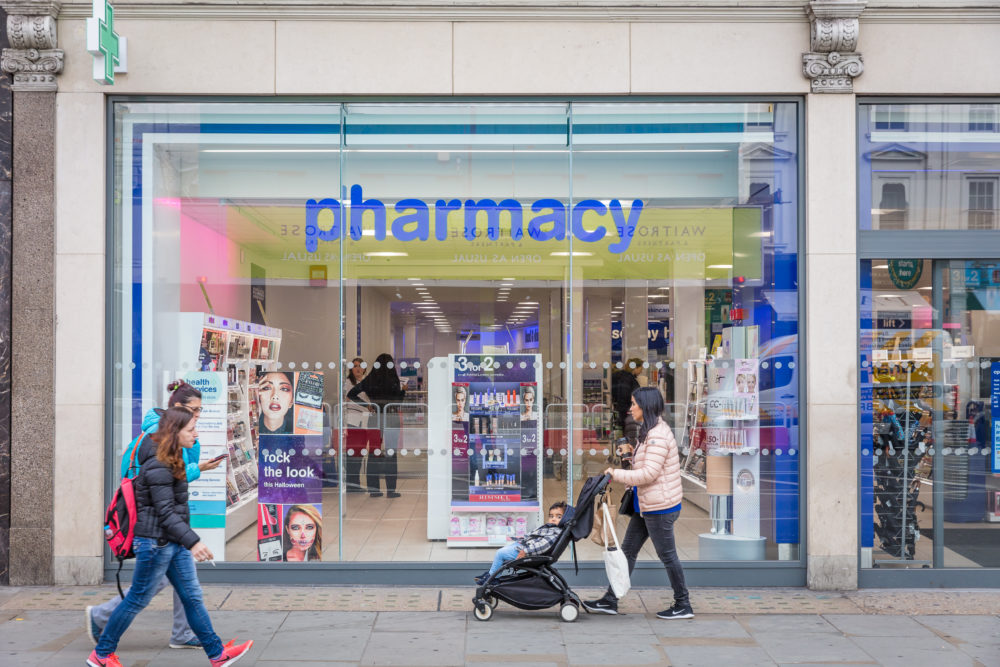
- Over the last 5 years an alarming shortfall of over 3,000 community pharmacists has developed in England.
- Pharmacies are struggling to recruit staff. Vacancy rates for community pharmacists have more than doubled in 2021 since 2017. 80% of managers in Southwest England reported difficulties with recruiting.
- Pressure is mounting on community pharmacy staff – pharmacies have stayed open throughout the entire pandemic, delivering Covid-19 vaccines and boosters and providing the public with lateral flow tests, but have also faced unprecedented amounts of abuse from the public.
- Government and NHS E/I needs to plan for the future community pharmacy workforce or patients will face increased waiting times and even more pharmacy closures.
The Company Chemists’ Association has uncovered a worrying shortfall of over 3,000 community pharmacists in England which has developed over the last 5 years1. Though official statistics show an increase in the number of pharmacists, this hides the true picture of a tug-of-war between parts of the NHS and community pharmacy, changing work patterns and the ever-increasing NHS driven workload that pharmacists face.
In 2019 the NHS pledged to recruit 6,000 pharmacists to Primary Care Networks (PCNs) by 2024. Since then, around 2,400 community pharmacists have been recruited into PCNs, depleting the community pharmacist workforce. This has added significant pressure on pharmacists who choose to stay in community pharmacies.
Our members report that many more pharmacists are choosing to work part-time, in some cases because of exhaustion, and so now the sector requires more pharmacists to help maintain the same level of services the public has come to expect during the pandemic. The shortfall of pharmacists within teams is also one of the reasons behind temporary closures as pharmacies are not allowed to operate unless there is at least one pharmacist onsite.
CCA members have reported concerns with recruiting pharmacists. Earlier this month, Health Education England published results from a workforce survey showing community pharmacist vacancy rates in 2021 have more than doubled since 2017. The worst-performing region is the Southwest of England, where 80% of pharmacy managers reported difficulties in recruiting pharmacists.
The Health Secretary wants NHS E/I to adopt a ‘Pharmacy First’ model where pharmacy will be the first port of call for minor ailments and illnesses, to free up capacity for GPs. Under this model, pharmacy will be pushed to do more but the Government is failing to recognise the real pressures the workforce is currently under.
Malcolm Harrison, CEO of the Company Chemists’ Association commented:
“Plans for community pharmacy to do more in primary care are a mere pipe dream unless the Government faces the facts. We need the Government to recognise the pressures that pharmacies are under and devise a workforce plan that is led by evidence. The current whack-a-mole approach is short-sighted and unhelpful.”
Gurjinder Sander, pharmacist from LloydsPharmacy Stafford, commented:
“These past few years have been tough for everyone. Pharmacies like ours have been open throughout the pandemic to make sure people can get their medicines, and care and advice. We’ve also been making sure patients can get their flu and Covid-19 vaccines, too. I’m really proud of the work that we do and the difference we make to our community.”
Johnny Dowd, Head of HR Operations at LloydsPharmacy, commented on the workforce challenges pharmacies are experiencing:
“Community pharmacy plays a crucial role in ensuring patients and communities have consistent access to vital medicines and care, and we’re incredibly proud of our colleagues’ commitment, resilience, and dedication to their patients. But there are additional pressures facing community pharmacy teams, which aren’t unique to LloydsPharmacy; workforce challenges caused by external factors are creating significant difficulties. Recruiting new pharmacists and pharmacy teams is increasingly difficult; simply put, there are not enough pharmacists to meet the demand, including the 3000 new PCN pharmacist roles that have been created, and the impact of Covid-19 absences is compounding this issue. We are working hard to actively bring new recruits into LloydsPharmacy, and we’re working with the CCA and the NHS to address the sector-wide workforce issues.”
Notes to editors
- NHS Primary Care Networks (PCNs) are groups of GP practices working together to focus on local patient care. They were first established in July 2019.
- The findings are part of the Company Chemists’ Association’s Review of the Community Pharmacist Workforce in England which uses the latest data from Health Education England and the General Pharmaceutical Council
- For further comment or to request an interview, please contact Tatjana Cvijanovic, Public Affairs and Communication Officer, mob 0782 565 8212 or email tatjana.[email protected]
References:
- The CCA. Review of the Community Pharmacist Workforce in England. January 2022 – Available on website
